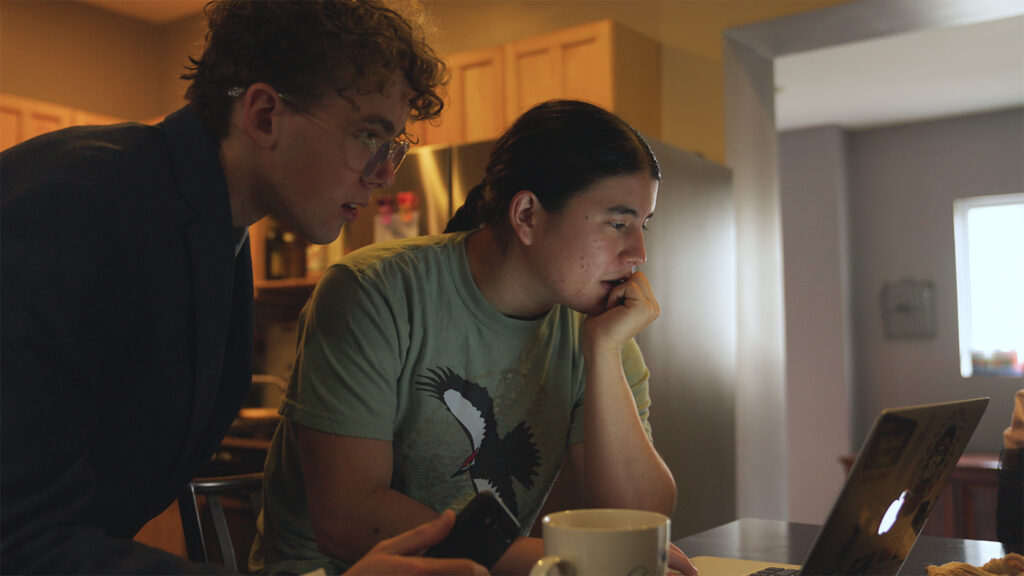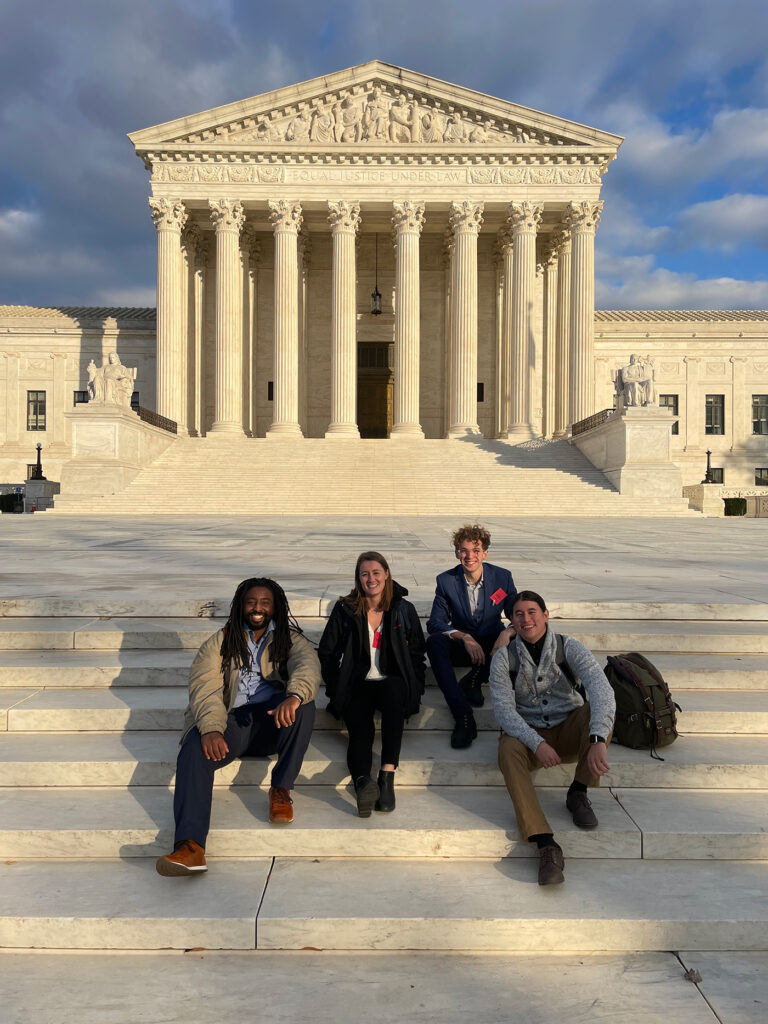News Based on facts, either observed and verified directly by the reporter, or reported and verified from knowledgeable sources.
The Young People Reshaping Wildfire Policy

Ryan Reed spent much of his childhood outdoors, absorbing the knowledge of his Karuk, Hupa, and Yurok ancestors through activities like hunting and fishing in the forests of Northern California. As he grew older, he began participating in cultural burns, an ancient practice also known as prescribed or controlled burns that involves igniting and tending to small fires as a way to maintain the health of the forest and prevent larger fires. By necessity, this education was “discrete,” he said, because for years, these burns were outlawed as part of a larger suppression of Native practices and rights.
These bans “stripped us of our culture, but [were] also an ecological disaster,” said Reed. Federal and state agencies adopted fire-suppression policies that prioritized snuffing out all flames as quickly as possible, leaving the forests full of brush and kindling that, combined with climate-related drought and record-breaking heat, fueled the current wildfire crisis. In the 23 years since Reed was born, California has experienced 15 of its 20 most destructive wildfires on record.
Reed is now dedicated to restoring humans’ relationship to fire. He’s a graduate student, Indigenous fire practitioner and wildland firefighter, and he’s teaming up with other young fire practitioners to change the way the U.S. responds to the wildfire crisis.
“There needs to be a continuous place for our generation in [responding to] a crisis that we’re most impacted by,” said Kyle Trefny, a student at the University of Oregon and seasonal wildland firefighter.

In 2022, Reed, Trefny and two other students — Bradley Massey, a junior at Alabama A&M University, and Alyssa Worsham, who recently completed her master’s at Western Colorado University — formed the FireGeneration Collaborative (FireGen, for short), a group that advocates for centering Indigenous knowledge and bringing more young people into the wildfire space.
That includes diversifying the workforce that responds to wildfires, Trefny said. A recent U.S. Government Accountability Office report found that the vast majority of wildland firefighters—more than 80%—identify as male and more than 70% of the workforce is white. Though Trefny is both male and white, he identifies as queer. He said he was struck by the lack of diversity in the ranks and described the culture as patriarchal and militaristic.
A more inclusive and diverse workforce wouldn’t just lead to a better experience for new recruits, Trefny added, it could also help address the severe shortage of wildland firefighters. Last year, the Forest Service told Marketplace it was short more than 25% of the workforce it needed heading into fire season; the following months saw an above-average number of wildfires, including the largest and most destructive fire on record in New Mexico.
The FireGen cohort believes that getting more young and Indigenous people involved in developing wildfire policies can increase support for proactive tactics like prescribed burns. It’s a shift that Tim Ingalsbee, an instructor at the University of Oregon and a former wildland firefighter, said he’s noticed among his students in recent years.
“Young people want to get involved in putting good fire on the ground,” said Ingalsbee. “Thirty years ago, no one asked me that. They all want to be firefighters.”
In November, Ingalsbee traveled with Trefney, Reed, Massey and Worsham, to Washington, DC, at the invitation of U.S. Forest Service Chief Randy Moore. They met with Moore, Oregon Senators Jeff Merkley and Ron Wyden, and officials from the Department of the Interior’s Office of Wildland Fire to advocate for getting more young people involved in wildfire policy.
“The collaborative is passionate about being a part of the climate change solutions of the future, including work in prescribed fire and as wildland firefighters,” said Wade Muehlhof, a spokesperson for the Forest Service. “They bring great insights from the best and brightest we are trying to recruit into that workforce.”

The group arrived in Washington with a proposal to create an official avenue for young people to connect with the U.S. Forest Service and the Department of the Interior, the agencies that oversee federal wildland firefighting. Trefny said they looked to FEMA’s Youth Preparedness Council, which recruits young people to serve as peer educators and assist in other outreach efforts, as a model for bringing more young people into the field. (Muehlhof said his office was connecting the group with the Biden administration’s Wildland Fire Mitigation and Management Commission, which was created in 2021.)
In addition to its advocacy efforts, FireGen is working to fill a gap in knowledge about young peoples’ attitudes toward – and understanding of – fire. Reed, Trefny and Worsham are developing a research project that will gauge their peers’ interest in various fire-related activities, such as prescribed burning or fireproofing homes, to make a case to policymakers to fund workforce development programs that go beyond traditional firefighting. For Worsham, who became interested in wildfires through her graduate research in prescribed burns, it’s an opportunity to help others discover their own unique paths into this field.
“We need this base of young people who are rethinking how fire fits into bigger things, like land management and climate change,” said Worsham. “We’re aiming for fire happening at the right frequency, at the right severity, in the right vegetation and ecosystems. And that’s all going to take a lot more work on the front end than suppression, which is entirely [an] emergency or reactive response.”
In a contribution to a recent Federation of American Scientists report on wildfire responses, Reed and Trefny outlined ways that agencies could integrate Indigenous knowledge into their operations and invest in educating and onboarding young people. For example, they recommend shifting the hiring schedule for seasonal wildland firefighters from the fall to the spring to better accommodate students.
Massey, who co-captains Alabama A&M University’s student-run forest firefighting team, wants to create more opportunities for students to access forest management and wildland firefighting training. The Forest Service currently partners with a consortium of four historically Black colleges and universities (HBCUs) to establish student-run fire crews; Massey, who has led prescribed burns near his school’s Huntsville campus, hopes to establish a multi-school fire crew that could take on larger land management and firefighting responsibilities.
“Not too many people from my community are familiar with prescribed fire or wildland fire, so just being able to have that knowledge to give and open their eyes to see what else is out there [is my goal],” Massey said.
Massey and his FireGen teammates have seen, often up close, the devastation of increasingly frequent and severe wildfires. But they also understand that, much like becoming an electrician who installs heat pumps, understanding wildfires, and knowing how to anticipate and respond to them, is a skill set that will only grow in demand.
“Imagine if in every fire-prone community, the local community college, university or even their local high school had programs where young people can get [prescribed] burn qualifications and get experience in making a house resilient,” Trefney said. “Our generation needs to be part of a cultural shift toward living with fire and not fearing it.”
This article is originally appeared in Nexus Media News, an editorially independent, nonprofit news service covering climate change. Follow @NexusMediaNews.

|
Colleen Hagerty
is a California-based journalist telling narrative stories through video, print, and social media. She specializes in covering disasters, including deeply-reported features, and dives into how policies and technologies impact mitigation, effects, and recovery. You can find her work across BBC News and PBS outputs, as well as in The New York Times, The Washington Post, The Guardian, New York Magazine, Popular Science, Vox, and High Country News, among other outlets. She also has a newsletter about disasters, My World’s on Fire, which was shortlisted for a 2022 Covering Climate Now award.
|






